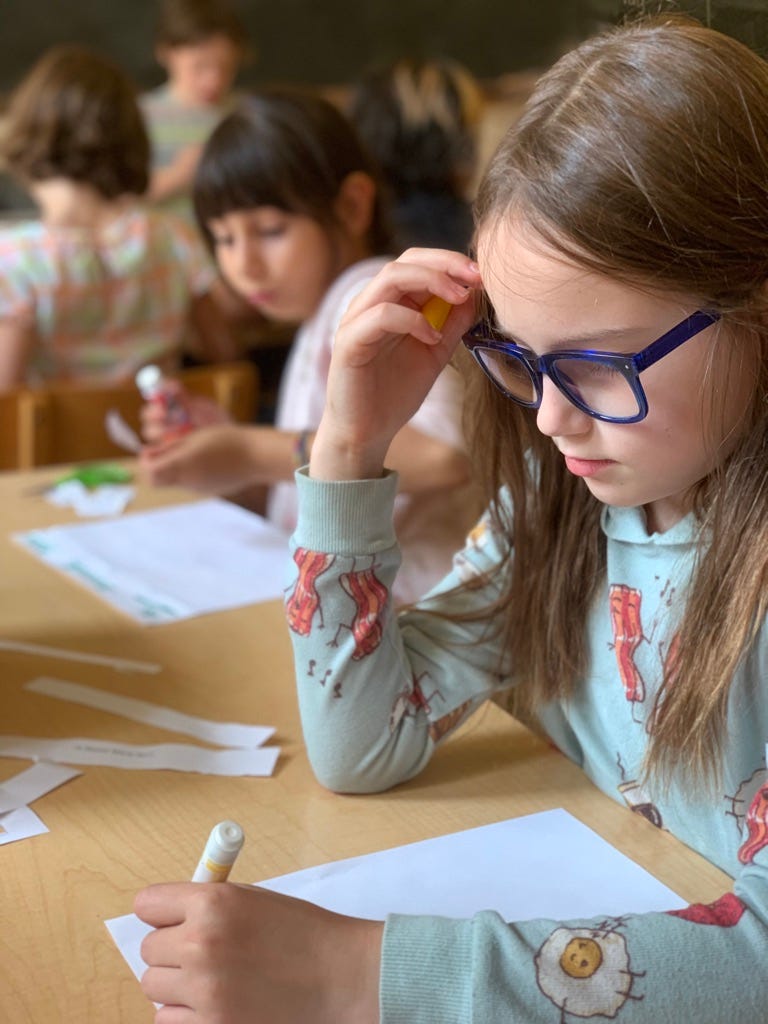Some thoughts about Waldorf math
🧮 What constitutes a developmental approach to math?
Over the years, I’ve developed some thoughts about what makes a Waldorf math lesson different from a mainstream one.
In my teacher training, I, of course, learned about the importance of building imaginative pictures to help those math concepts stick, but I had mixed feelings when I used that approach in the classroom. Though thinking of the long division symbol as a house, for example, helped a few kids, for most of them, the image got in the way. After all, there’s nothing intrinsic about the long division process that connects it to the image of a house. In that example, using the image felt contrived and artificial. Not helpful.

There were also times when I found students’ facility with the processes limited by the image. When their first impulse was to think of the image when facing a math problem, they had to go through many steps before being able to solve it. I realized I had to teach them how to let go of the image so their thinking went straight to solving when they encountered a problem.
At the same time, I recognized that the approach that my own teachers used when I learned math wasn’t the best, either. I learned how to solve math problems by learning “tricks,” without really understanding why the processes I used worked. For example, I didn’t know why I was supposed to put a zero in the ones place when solving a double-digit long multiplication problem—my teachers just said that’s how you did it. I didn’t understand why the whole long division process worked—I just memorized the steps and implemented them. Lucky for me, I was pretty good at remembering how to do something.
As I was teaching, I realized that my students would be best served by connecting math concepts and processes to information they already knew. That way, they could look at an unfamiliar problem, recognize something about it, and come up with an approach to solving it—even if I hadn’t taught them the “trick.”
This defined my way of thinking about a developmental approach to math, and from this, I identified a few key reminders for myself. (BTW, my approach to math was greatly informed by Elementary and Middle School Mathematics: Teaching Developmentally by John Van de Walle. This book was recommended by my teacher training instructor Nettie Fabrie, who, with her husband Wim Gottenbos and Jamie York, later wrote a great Waldorf math resource called The Teacher’s Source Book for Math in Grades 1-5.)
If you’re a paid subscriber, read on to learn some of the guideposts I kept in mind when teaching math, especially in the middle grades. You can also listen to an audio explanation of my thoughts.
Keep reading with a 7-day free trial
Subscribe to Waldorf at Work to keep reading this post and get 7 days of free access to the full post archives.



